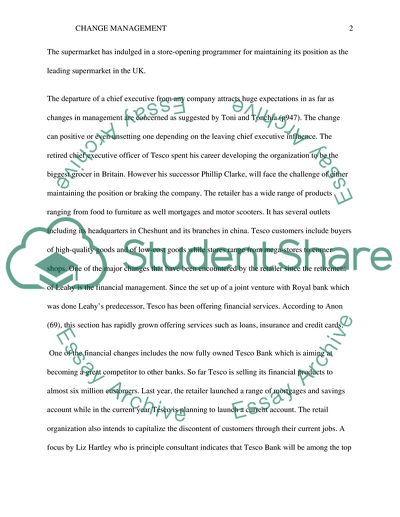Cite this document
(“The Retirement of Terry Leahy's from Tesco Case Study - 1”, n.d.)
The Retirement of Terry Leahy's from Tesco Case Study - 1. Retrieved from https://studentshare.org/human-resources/1750279-critical-examination-of-the-change-management-implications-the-retirement-of-terry-leahys-chief-executive-will-have-on-tesco
The Retirement of Terry Leahy's from Tesco Case Study - 1. Retrieved from https://studentshare.org/human-resources/1750279-critical-examination-of-the-change-management-implications-the-retirement-of-terry-leahys-chief-executive-will-have-on-tesco
(The Retirement of Terry Leahy'S from Tesco Case Study - 1)
The Retirement of Terry Leahy'S from Tesco Case Study - 1. https://studentshare.org/human-resources/1750279-critical-examination-of-the-change-management-implications-the-retirement-of-terry-leahys-chief-executive-will-have-on-tesco.
The Retirement of Terry Leahy'S from Tesco Case Study - 1. https://studentshare.org/human-resources/1750279-critical-examination-of-the-change-management-implications-the-retirement-of-terry-leahys-chief-executive-will-have-on-tesco.
“The Retirement of Terry Leahy'S from Tesco Case Study - 1”, n.d. https://studentshare.org/human-resources/1750279-critical-examination-of-the-change-management-implications-the-retirement-of-terry-leahys-chief-executive-will-have-on-tesco.


